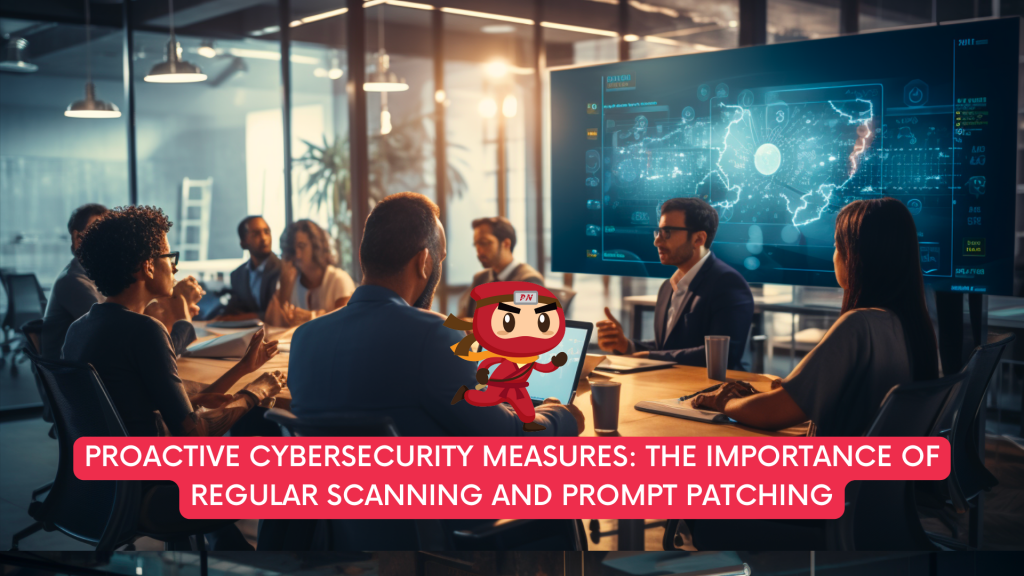
In the ever-evolving landscape of cybersecurity threats, organizations face a constant battle to protect their systems and data from malicious actors. One crucial aspect of this defense strategy is the regular scanning for vulnerabilities and prompt patching of any identified weaknesses. In this comprehensive article, we explore the significance of these proactive cybersecurity measures and their role in preventing cyberattacks and safeguarding organizational assets.
Regular scanning for vulnerabilities is a proactive cybersecurity measure that involves systematically scanning IT systems, networks, and applications to identify potential weaknesses or security flaws. These vulnerabilities could be the result of software bugs, misconfigurations, or outdated software versions.
By conducting regular scans, organizations can detect vulnerabilities before they can be exploited by cybercriminals, allowing for timely remediation and strengthening of defenses.
Once regular scanning is complete and vulnerabilities are identified, prompt patching is essential to mitigate the risk of exploitation by cybercriminals.
Patching involves applying updates or fixes provided by software vendors to address known vulnerabilities and improve the security posture of IT systems and applications.
Failure to patch promptly leaves systems and data exposed to exploitation, increasing the risk of cyberattacks such as data breaches, ransomware attacks, and other forms of malicious activity.
The primary goal of regular scanning and prompt patching is to prevent bad actors from exploiting vulnerabilities to launch cyberattacks. Cybercriminals are constantly scanning the internet for vulnerable systems and applications that they can exploit to gain unauthorized access, steal personal data, or disrupt operations.
By regularly scanning for vulnerabilities and promptly patching any identified weaknesses, organizations can thwart potential attacks and minimize the risk of security incidents.
Proactive cybersecurity measures such as regular scanning for vulnerabilities and prompt patching are essential for protecting organizations from cyberattacks and safeguarding their assets.
By conducting regular scans to identify vulnerabilities and promptly patching any identified weaknesses, organizations can mitigate the risk of exploitation by cybercriminals and strengthen their overall security posture. Ultimately, investing in effective vulnerability management practices is essential for minimizing the risk of security incidents and ensuring the long-term security and resilience of IT systems and data.
Your appointed DPO can work with you on your PDPA compliance, ensuring that there will be policies in place to make sure that the handling of personal data is PDPA compliant.
A Data Protection Officer (DPO) oversees data protection responsibilities and ensures that organisations comply with the Personal Data Protection Act (PDPA). Furthermore, every Organisation’s DPO should be able to curb any instances of PDPA noncompliance as it is the officer responsible for maintaining the positive posture of an organisation’s cybersecurity.
DPOs complement organisations’ efforts to ensure that the organisation’s methods of collecting personal data comply with the PDPA. It also ensures that policies are set in place to make sure that there will be no instances of data breaches in the future.
Don’t wait any longer to ensure your organisation is PDPA compliant. Take our free 3-minute PDPA Compliance Self-audit checklist now, the same “secret weapon” used by our clients to keep them on track. Upon completion, we will send you the results so you can take the necessary action to protect your customers’ data. Complete the free assessment checklist today and take the first step towards protecting your customers’ personal data.
Role of Enhanced Access Controls in Safeguarding Personal Data in Telecommunications that every Organisation in…
Effective Incident Response Procedures in Strengthening Data Security that every Organisation in Singapore should know…
Crucial Role of Regular Vulnerability Scanning that every Organisation in Singapore should know. Strengthening Your…
Enhancing Data Security with Multi-Factor Authentication that every Organisation in Singapore should know. Enhancing Data…
Strong Password Policy as a first line of defense against data breaches for Organisations in…
Importance of Efficient Access Controls that every Organisation in Singapore should take note of. Enhancing…
This website uses cookies.